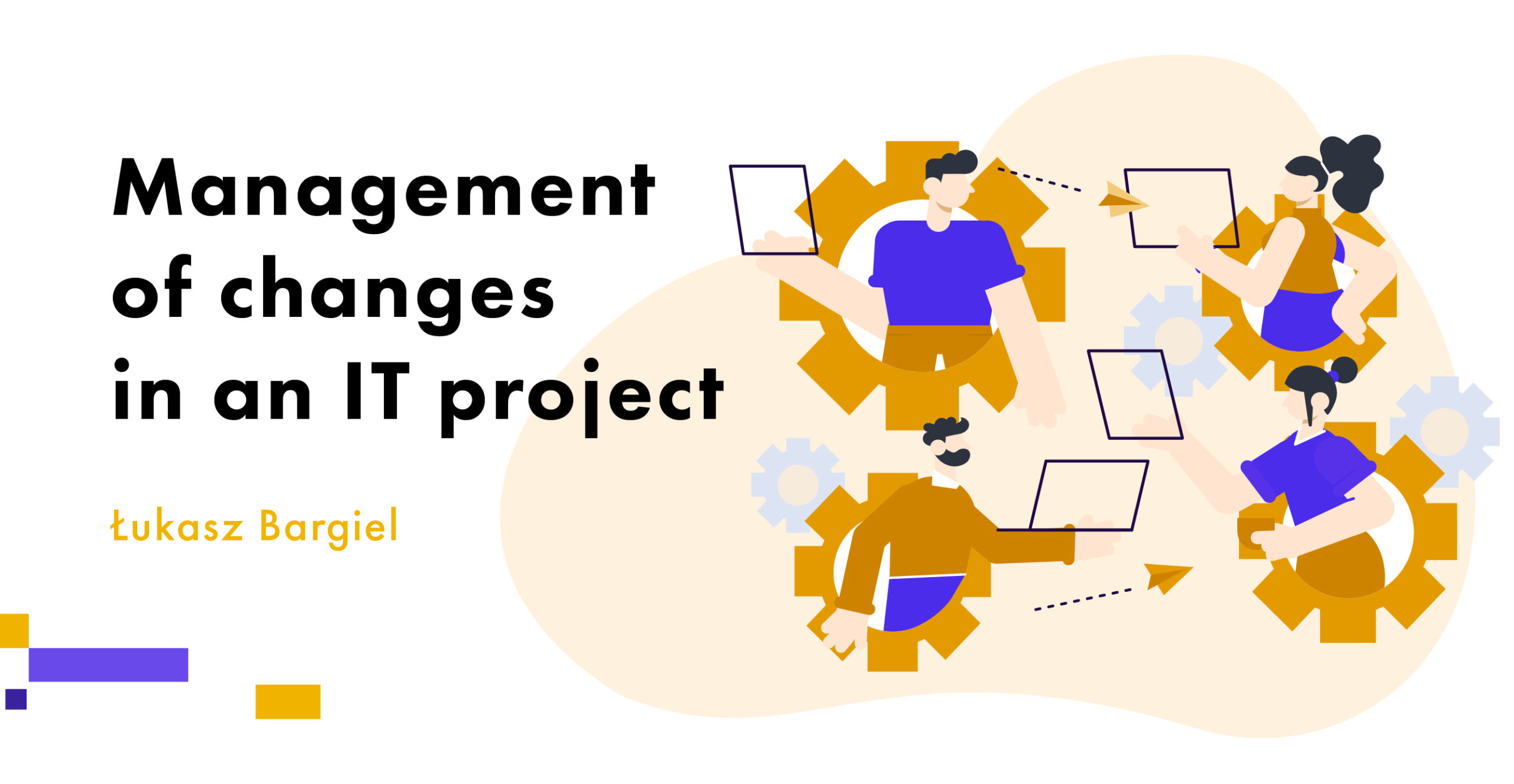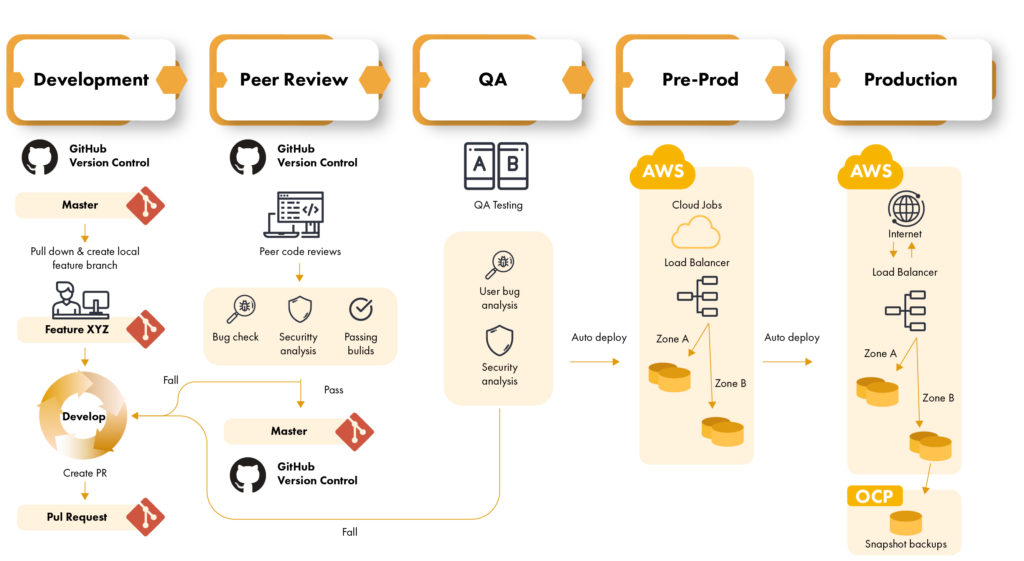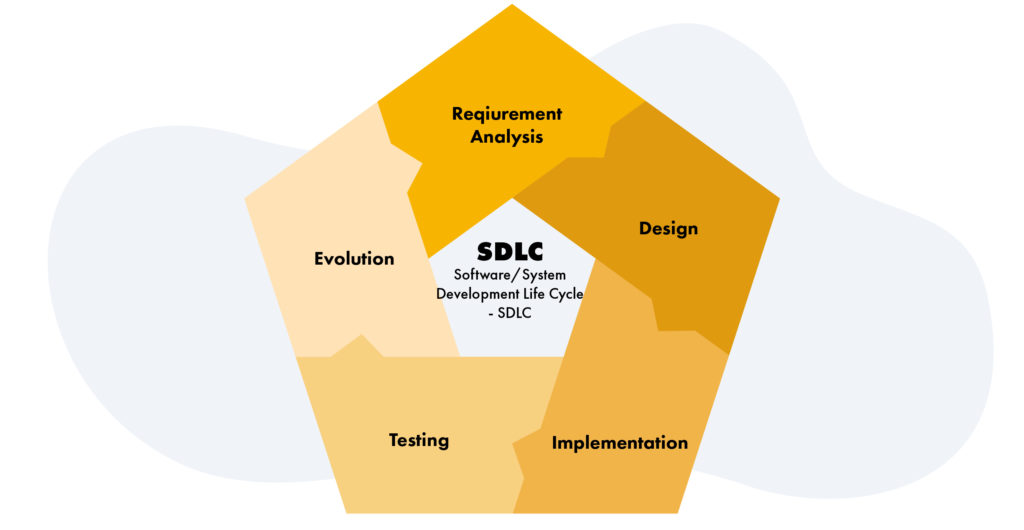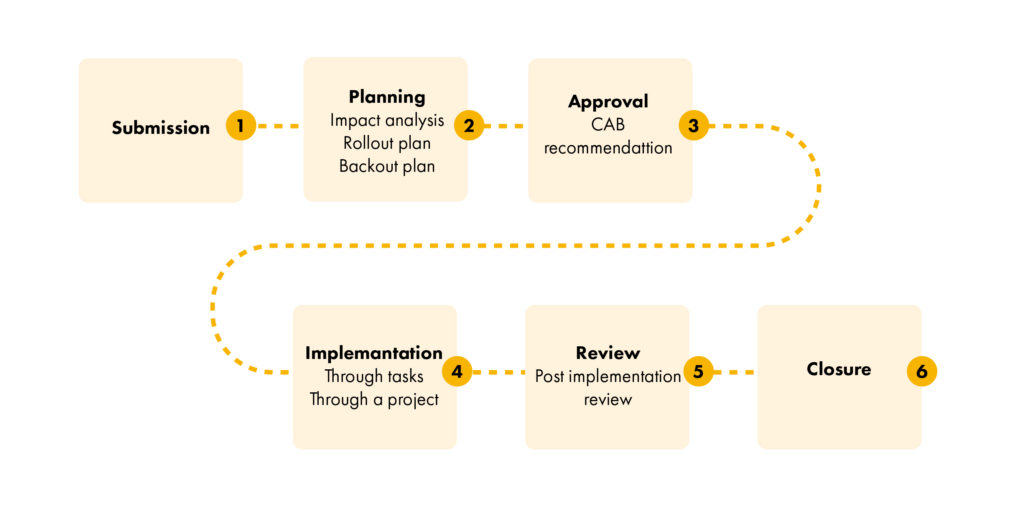Management Of Changes In An IT Project
16 June 2021

Introduction
A glance at change management and release
Management of Change and release management depends on transparency, collaboration and flexibility.
An effective change management system can actually lead to a more efficient release management process. Therefore, let’s first define terms such as management of change and release management in IT projects. With DevOps support, we can see how these two concepts work together to help build better, more efficient and more reliable CI / CD pipelines.
1. What is a change?
As described in the ITIL nomenclature, a change is “the addition, modification or removal of anything that could directly or indirectly affect services”.
To put it simply: any change in an organization’s IT infrastructure that may affect its operations is called an IT change. This includes replacing printers, projectors, servers, software and more. This article is devoted to changes in the functionality of the software.
2. What is change management?
The IT project change management process refers to the team’s ability to manage easily configurations, run automated tests, alert people who
respond to a call, and take appropriate action even in unknown and unknown areas in all applications, infrastructure and operations.
In most cases, change management protocols should be designed to carry entirely new initiatives and procedural adjustments, moving them from Development to Operatives.
The main goal of the change management process should be to standardize the methods used by the team and the procedures you will follow in order to efficiently and timely handle each single change.
Thanks to the standardization of operations, the team will be able to minimize the potential impact of any incidents related to changes on the quality of services. In this way, you can also improve the efficiency of the daily operations taking place in the IT organization.
The database of software supporting the DevOps area used for system configuration management, which is responsible for the change management process, will manage and introduce changes to CI elements (configuration elements) that are part of the production environment and are subject to the versioning and change control system.
Overall, IT operations are responsible for maintaining and protecting staging and production environments through change control. However, this responsibility usually ends with production environments.
3. What is Release Management?
Release management is the process of planning, building, testing, preparing and deploying new code and services in production environments. Both Developers and other IT Operatives participate in the release process to deploy quickly and reliably end-user services. The concept of change management is more concerned with the way people work with changing processes and tools, while release management is more concerned with the specific process of delivering functionality and services in a production environment. Continuous delivery and continuous integration of complex applications and services based mainly on cloud solutions requires that both release management and change management processes be aligned and optimized. Flexibility and preparation for quick incident response lead to IT DevOps specialists who can quickly fix and control their responsiveness to unknown issues.

4. The software development process based on the SDLC (Software / Systems development life cycle)

5. The course of the change and release management process
The course of the change and release management process can be divided into many subsections.

Change management flow:
Step 1: Submission
The first step is to initiate the change. This involves collecting basic change ticket information such as change type and priority.
- Creation: Shift tickets are initiated using the service desk tool. The necessary information is collected from the very beginning by means of an amendment form with mandatory fields.
- Defining Change Roles: By using change roles, organizations can delegate responsibility for change to different stakeholders and control the level of access each role has at each stage of the change.
Stage 2: Planning
The next stage is to plan the entire shift. Good shift planning is the secret to successful implementation. You must obtain all required approvals before implementing a change. Details such as impact, recall plans, contingency plans and associated downtime are prepared to inform stakeholders thoroughly about the change plan and convince them of the value of the change.
Stage 3: Approval
The change plan must then be approved by the change management team (CAB), the emergency change management team (ECAB) and any other body affected by the change or part of the organization’s infrastructure affected by the change. Creating your own CAB teams helps organizations to group the right staff to easily manage approvals. Automating the approval process speeds up the entire change and ensures that no approval requests are missed.
Note: A variety of roles and teams belong to the CAB team. This may include C-level executives, team managers, technical teams, financial staff, and more, depending on the severity and scale of the change.
Stage 4: Implementation
After obtaining the necessary approvals, the change can be implemented. Organizations can track and manage the implementation of changes by creating tasks or through a project.
- Delegating work through tasks: Tasks are created and assigned to technicians from different teams, which makes it easier to manage the work performed by everyone involved in the implementation of the change. Parent and child tasks can be used to establish task dependency and order of execution, and avoid skipping tasks.
- Leverage Project Management: Organizations can leverage projects to handle large changes, such as moving their entire organization’s infrastructure to the cloud. Projects support a wider scope of implementation and help manage more tasks, people, and milestones. Deep integration between change management and project management can bring many benefits to an organization.
Step 5: Review
Then, a post-implementation review should be performed to verify that no deviations have occurred and that any issues have been resolved before closing the shift.
Stage 6: Closure
This is the final step in the change management process. The change made is marked as successful, unsuccessful or incomplete. Saving the correct closure code makes your organization’s metrics more accurate and useful.
The flow of changes in the IT environment:
- Approved Change.
- Release Planning.
- Release Building.
- Acceptance Testing.
- Release Preparation Release.
- Implementation (Release and Deployment).
6. Role of the release manager and his challenges
The flow of the issue management process must be overseen by the manager, although he may decide to delegate some of his duties to subordinates.
This usually happens when the scope of a project begins to expand.
Nevertheless, the job of a release manager typically includes the following responsibilities:
- Planning, coordinating and managing releases across the enterprise for multiple applications in different portfolio streams.
- Building an IT release calendar in close collaboration with IT release managers from different IT portfolios and centralizing the view of all editions.
- Assist in managing projects and dependencies to respect milestones to make sure release integrity can be measured.
- Risk management and troubleshooting that affect the scope, quality and release schedule.
- Conducting Release Readiness Reviews, Business Go / No-Go Reviews, and Milestone Reviews.
- Attend CAB meetings to discuss the scope of releases and / or roadblocks.
- Manage and deliver reports as well as update meetings for senior IT management such as CIO and CTO, as well as business area management.





